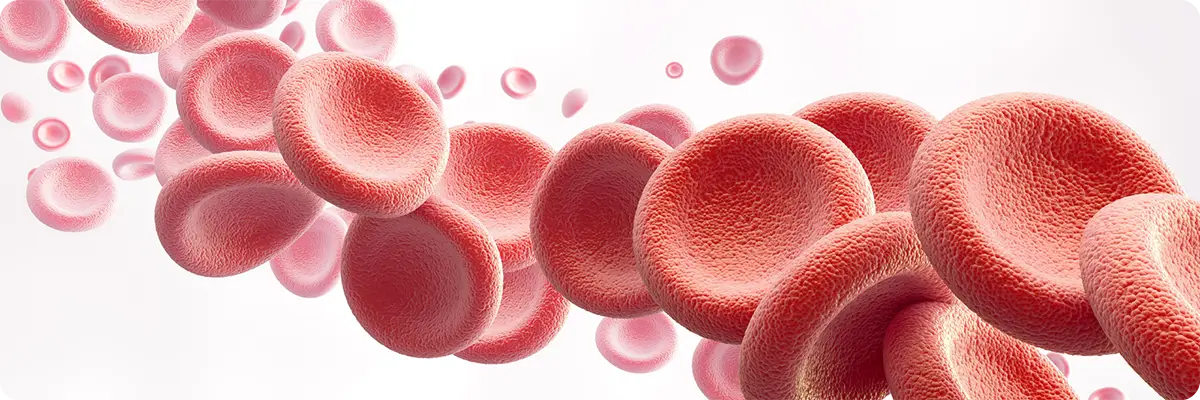Solutions
keyboard_arrow_downServices
keyboard_arrow_downSupport & Resources
keyboard_arrow_downCompany
keyboard_arrow_downContact
Benefits of Ferritin
Exceptional correlation
A correlation coefficient of r=0.99 was displayed when the Randox ferritin assay was compared to commercially available methods.
Limited interference
The Randox ferritin assay has shown to have limited interference from bilirubin, haemoglobin and triglycerides.
Applications available
Applications available detailing instrument-specific settings for the convenient use of the Randox ferritin assay on a variety of clinical chemistry analysers.
Excellent stability
The Randox ferritin assay is stable to expiry when stored at +2oC to +8oC.
Calibrator and controls available
Calibrator and controls available offering a complete testing package.
Ordering information
| Cat No | Size | |
|---|---|---|
| FN3452 | R1 1 x 40ml (L) R2 1 x 20ml | Enquire Kit Inserts RequestsView MSDSBuy Online |
| FN3888 | R1 3 x 20ml (L) R2 3 x 11ml | Enquire Kit Inserts RequestsView MSDSBuy Online |
(L) Indicates liquid reagent
Instrument Specific Applications (ISA's) are available for a wide range of biochemistry analysers. Contact us to enquire about your specific analyser.
Diagnostic Uses
Physiological Significance
Ferritin is an iron storage protein. It is the primary iron storage mechanism and is critical to iron homeostasis. As an iron store, ferritin has two roles 1.
- Provides a reserve of iron, which can be transported for the synthesis of molecules such as cytochromes, haemoglobin and iron-sulphur compounds.
- Safe-guards cells, DNA, lipids and proteins from the potential toxic effects of iron.
Ferritin is a vital component of iron homeostasis. It acts as as a ferroxidase, converting Fe(II) to Fe(III) as iron is internalised and sequestered in the ferritin mineral core. Iron is toxic in cellular systems due to its capacity to generate reactive oxygen species (ROS) which directly damages cells, DNA, lipids and proteins 1.
Iron Deficiency
Iron deficiency without anaemia is a diagnostic challenge, as it commonly goes unrecognised for a long period of time as the patient is asymptomatic. Ferritin is the most sensitive and specific test used in the diagnosis of iron deficiency, especially when a patient presents with symptoms of iron deficiency anaemia, but their full blood count is normal 2.
Still's Disease
Adult onset Still’s Disease (AOSD) is a rare systemic inflammatory disorder characterised by arthritis, fever and a typical skin rash. Elevated ferritin levels have been observed in 89% of patients with AOSD, with five times the normal level observed in over half of patients 3.
Sepsis
Elevated ferritin levels is associated with a poor outcome in patients with sepsis and can be used as a predictive marker of mortality along with current prognostic scores 4. Elevations of both ferritin and CRP during hospitalisation was associated with the highest mortality, followed by elevations of either biomarker alone (fig. 1) 5.
Fig. 1. Risk contingency table for mortality and organ dysfunction based on cut-points for C-reactive protein and ferritin and patients' maximum value for each biomarker 5
Data is displayed as n / N (%) for mortality outcomes
*Significant difference in high/intermediate versus low risk quadrants; ( < 0.001 by Mann-Whitney test PELOD2, Pediatric Logistic Organ Dysfunction Score 2 )
cHL
Ferritin is the most important acute phase reactant in the prediction of classical Hodgkin lymphoma (cHL). Ferritin correlates with the inflammatory activity of the cHL microenvironment, which could explain its prognostic impact. Elevated ferritin levels are associated with clinical features of aggressive disease and poor prognosis in cHL patients 6.
COVID-19
As an acute phase reactant, ferritin levels increase during inflammation and infection. Several studies have indicated that elevated ferritins levels were confirmed in the majority of hospitalised patients with COVID-19, approximately 60%. In the critically ill COVID-19 patients, extremely elevated ferritin concentrations were recorded, which could be attributed to a cytokine storm and secondary haemophagocytic lymphohistiocytosis (a hyperinflammatory syndrome associated with multiorgan failure) 7.
Get in touch to discover more
To find out more about Ferritin and other diagnostic reagents, enquire now.



